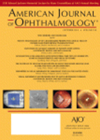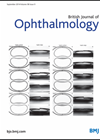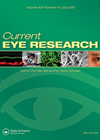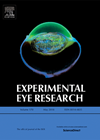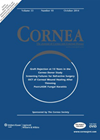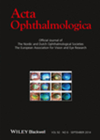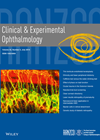
Journal Reviews archive for 2014
Outcomes of cataract surgery in patients with uveitis
This is a systematic, evidence-based literature review and meta-analysis, looking at the visual outcomes (vision 20/40 or better) of cataract surgery in uveitic eyes. The authors searched MEDLINE, EMBASE, CINHAL and CENTRAL, including English language and human studies only. They...
Cataract surgery in small adult eyes
This is a retrospective audit of a five year study period, between the periods of January 2006 to December 2010, where a surgical log book search was performed. The inclusion criteria of this study were intraocular lenses (IOL) power greater...
Short-term effects of intravitreal bevacizumab on the cornea
Bevacizumab has been extensively used to treat macula oedema and neovascularisation of the retina and it has also been useful in the management of corneal neovascular diseases. This prospective study aimed to provide more information on the effect bevacizumab may...
Meibomian gland dropout in patients with dry eyes
In this prospective study 264 patients with symptoms of dry eye were examined with a non-contact meibography system to assess the morphological changes in their meibomian glands. These patients were not previously diagnosed with meibomian gland dysfunction and patients with...
Ovarian hormones drive onset of Sjogren’s disease in mice
Sjogren’s syndrome (SS) is a debilitating, sight-threatening, systemic autoimmune disease with no effective treatment available. SS is characterised by lacrimal gland lymphocytic infiltration and epithelial cell death, as well as by the presence of serum autoantibodies. Patients have severe dry...
Do topical steroids improve visual outcome in the treatment of bacterial keratitis?
The use of topical corticosteroids as an adjunctive treatment to antibiotics in the management of bacterial keratitis remains a controversial issue. The results of the Steroids for Corneal Ulcers Trial (SCUT) – a randomised, double-masked, placebo-controlled trial that recruited patients...
Squamous metaplasia of conjunctival epithelial cells with soft contact lens wear versus non-lens wearers
Conjunctiva is composed of non-squamous epithelial cells interspersed with goblet cells, which is a secretory epithelium. Squamous metaplasia is a transformation to non-secretory epithelium, ‘keratinised’ and enlargement of the conjunctival non-goblet cells and relatively shrunken nuclei are seen on impression...
Accelerated (9mW/cm2) corneal collagen cross-linking for keratoconus
This is one of many studies published / to be published on corneal collagen cross-linking that has a treatment time of 10 minutes compared to the previous Dresden protocol of 30 minutes to halt progression of keratoconus. Much has changed...
Long-term open angle glaucoma cohort study
This was a study to estimate the development of open angle glaucoma (OAG) in a screened and re-examined elderly group as compared to an unscreened group during the same time period. The participants comprised of 856 individuals born in 1915...
Retinal blood flow changes in glaucoma
This study examined the changes in retinal blood flow and vessel diameter after IOP reduction in high- and low-pressure glaucoma; exfoliation glaucoma (ExG) and normal-tension glaucoma (NTG). Glaucoma progression is seen at times in eyes despite IOP reduction and changes...
Effect of phacoemulsification on trabeculectomy function
Previous studies have reported cataract surgery post trabeculectomy to be detrimental to IOP control. Conversely, other studies have reported phacoemulsification performed before trabeculectomy as a factor for bleb failure. The objective of this retrospective case control study was to evaluate...
Are single IOP measurements adequate for estimating the effect of IOP lowering interventions?
The World Glaucoma Association recommends that, to assess the effect on intraocular pressure (IOP) of medication or surgery, the mean of multiple measurements of postoperative IOP is a better reflection of IOP than a single measurement of postoperative IOP. The...

